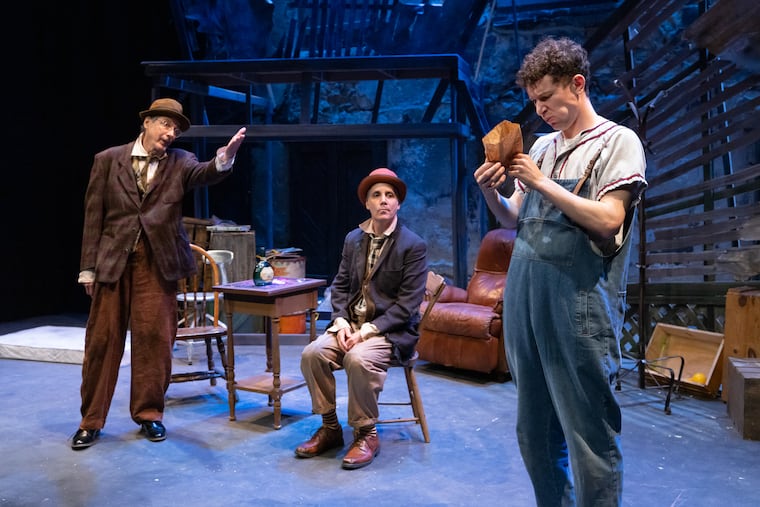Send in the clowns! There is a puzzle to finish.
Playwright Juliette Dunn noticed her son’s autistic behavioral therapy was just like improv. Inspired, she wrote 'The Puzzle,' a play about clowns who meet a boy with autism.

Philly playwright Juliette Dunn needed to make a change. Her4-year-old son Colin, a nonspeaking kid with autism, was in a specialized behavioral program to help him communicate with others. The invasive lessons emphasized fitting autistic people into a neurotypical world, Dunn said, and she saw it wasn’t working for him.
She enrolled him in a Son-Rise program, which encourages parents to try “joining,” by acting out autistic behaviors with their child. “It’s beyond just acceptance; it’s building this bond of friendship,” said Dunn. She also immediately recognized how the therapy was like a character study in theater and saw the connections to the improv mantra, “Yes, and.”
That experience led Dunn to create more theater opportunities for and about autistic communities in the region. Working with Theatre Horizon, she created a pilot program for acting classes that grew into the robust Autism Drama Program.
Her decade-long project, The Puzzle, just had its world premiere at the Hedgerow Theatre in Rose Valley.
The play follows Quinton and Finneas, two bowler-wearing clowns played by professional clown David Shiner and Broadway actor Daniel Passer, who meet The Boy, played by Michael Stahler, a Philadelphia actor who is autistic. All three outcasts live in an abandoned lot, where the centerpiece is a table with a precious puzzle the clowns are close to finishing.
“There’s something really pure about the clown and there’s something really pure about autistic individuals who are nonspeaking,” said Dunn. “They’re both very direct, there’s no pretense, no manipulation. It’s just ‘This is who I am,’ and it’s unfiltered.”
The puzzle has been a symbol representing autism through the organization Autism Speaks, though it has a controversial history, which the theater acknowledges with explanatory signs in the lobby. Advocates say the puzzle imagery frames autism as a problem to be fixed, which stigmatizes people with autism.
Dunn uses it as a plot device: The Boy hides the final few pieces of a puzzle that the clowns have nearly completed. So they have to talk, in whatever ways they can, to The Boy to get those pieces back.
The Boy brings together the clowns — who bicker like an old couple. The clowns, in turn, realize that they have to change their approach to speaking with The Boy. In one moment, when The Boy shouts in distress and curls up in the fetal position on the floor, Finneas gets down and does the same. They play “what is it,” where they name the objects around them, and all three bond over quoting and acting out popular movie lines. The clowns are joining, meeting The Boy where he is and finding new ways to interact.
When the characters play Scrabble and talk about the stars, The Boy shares his excellent vocabulary and encyclopedic knowledge of astronomy. He spells out that he’s happy to play games with friends. Spelling to communicate is a tool that Dunn has used with her son.
When Dunn started writing The Puzzle, Colin was 12 and had begun typing for the first time. “It’s a lonely life,” he wrote, explaining that people assumed he was intellectually disabled because he couldn’t talk to them easily. Dunn says it’s common for people to underestimate the intelligence of nonspeaking folks with autism, because some “think that just because they can’t speak, they don’t have anything to say.”
In the more challenging parts of the play, Quinton shouts with frustration because he can’t get The Boy to answer him. “I’m sort of working out my own mistakes with these characters, you know, the things that I’ve done — I’ve underestimated my own son at times,” Dunn said.
She hopes The Puzzle will expose the interior world of autistic people who are nonspeaking. Colin, now 22, attended a relaxed performance recently and typed his review to Dunn.
“He said it was a nice show and it was funny,” Dunn said. “I [asked] ‘Do you want your friends to come see it?’ and he said no.”
“The Puzzle” runs at the Hedgerow Theatre, 64 Rose Valley Rd., Media, Pa. through June 4. A filmed performance will be available to stream June 16-18 on the League of Live Stream Theater website.